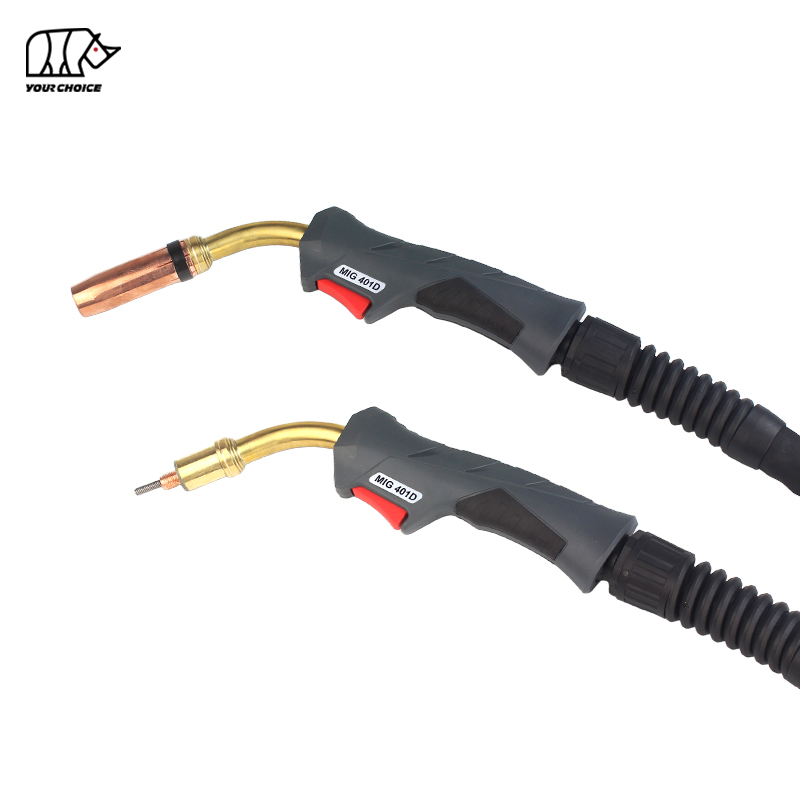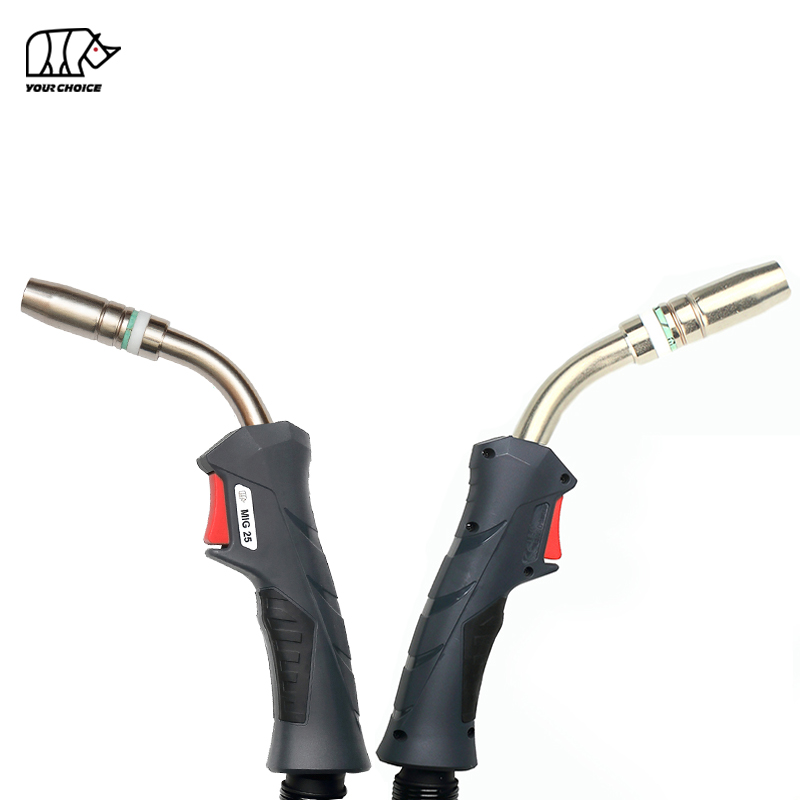If you’ve ever stepped into the world of welding or browsed through welding equipment, you’ve probably asked yourself this question: “Are all MIG torches the same?” At first glance, they might look pretty similar—after all, they all do the same basic job. But dig a little deeper, and you’ll find that there's a surprising amount of variety in MIG torches. From their design to their functionality, no two torches are quite alike. Let’s dive in and break it all down.
Understanding the Basics of MIG Torches
Before we start comparing MIG torches, let’s cover the basics. What exactly is a MIG torch, and what role does it play in the welding process?
What is a MIG Torch?
A MIG torch, or Metal Inert Gas torch, is the handheld tool used in MIG welding. It's the part of the welding setup that you hold while working, and it’s responsible for feeding the wire electrode, directing the shielding gas, and creating the arc that melts and fuses the metal. In simple terms, it’s like the business end of a glue gun—except instead of glue, you’re working with molten metal.
How MIG Torches Work
Here’s how it works: when you pull the trigger on a MIG torch, the wire electrode feeds out of the nozzle while shielding gas flows around it. The gas protects the weld from contamination, and the arc created between the wire and the metal heats everything up to melting point. The result? A strong, clean weld.
Types of MIG Torches
Now that we know what a MIG torch does, let's talk about the different types available. Spoiler alert: they're not all created equal.
Manual vs. Automatic MIG Torches
One of the first distinctions to make is between manual and automatic MIG torches.
Manual MIG torches require the welder to control everything, from guiding the torch to adjusting the settings. They’re great for projects that need precision and flexibility.
Automatic MIG torches, on the other hand, are often used for repetitive or industrial tasks. These torches are mounted on machines and controlled by a program, making them ideal for high-volume production.
Air-Cooled vs. Water-Cooled MIG Torches
Another key difference lies in how the torch is cooled.
Air-cooled MIG torches use ambient air to dissipate heat, making them simpler and more portable. However, they can overheat during long welding sessions.
Water-cooled MIG torches use a cooling system that circulates water through the torch. These are more durable and suited for heavy-duty work, but they come with a higher price tag.
Heavy-Duty vs. Light-Duty MIG Torches
Finally, MIG torches can be categorized by their workload capacity.
Heavy-duty torches are designed for industrial use and can handle higher amperages and longer duty cycles.
Light-duty torches are smaller, lighter, and better suited for hobbyists or smaller projects.
Components That Make a MIG Torch Unique
What makes one MIG torch different from another? A lot of it comes down to the individual components.
Nozzles and Their Variations
The nozzle directs the shielding gas over the weld, and its size and shape can vary depending on the application. Some nozzles are wider for better gas coverage, while others are narrower for more precision.
Wires and Electrodes
The type and size of the wire electrode also play a big role. Some MIG torches are designed to work with specific wire sizes, so it's important to match the torch to your welding needs.
Handles and Ergonomics
A MIG torch’s handle might not seem like a big deal—until you've spent hours holding one. Ergonomic designs can make a huge difference in comfort and reduce fatigue during long welding sessions.


Factors to Consider When Choosing a MIG Torch
With so many options out there, how do you pick the right MIG torch? Here are a few things to think about.
Material Thickness and Type
Different torches are better suited to different materials. For example, thicker materials might require a heavy-duty torch with a higher amperage capacity, while thinner materials might call for a lighter, more precise torch.
Duty Cycle and Welding Frequency
The duty cycle refers to how long a torch can operate before it needs to cool down. If you’re welding for extended periods, you'll want a torch with a high duty cycle.
Budget and Cost Considerations
While it’s tempting to go for the cheapest option, keep in mind that a low-cost torch might not last as long or perform as well. It's all about finding a balance between affordability and quality.
Are Cheap MIG Torches Worth It?
Let's address the elephant in the room: are budget-friendly MIG torches any good? The answer is… it depends.
Advantages of Budget MIG Torches
Budget MIG torches are great for beginners or hobbyists who don't need all the bells and whistles. They're affordable, easy to replace, and can handle basic welding tasks just fine.
Drawbacks of Budget MIG Torches
However, cheaper torches often have lower-quality components, shorter lifespans, and less precision. If you're serious about welding, it might be worth investing in a higher-quality torch.
The Importance of Compatibility
One of the most important factors when choosing a MIG torch is compatibility with your welding machine.
Connector Types
Different welding machines use different connector types, so it's crucial to make sure your torch will fit.
Gas Flow and Regulation
Proper gas flow is essential for a clean weld, so make sure your torch is compatible with your gas regulator and setup.
Maintenance and Longevity of MIG Torches
Like any tool, a MIG torch needs proper care to stay in good shape.
Cleaning and Replacing Parts
Regularly cleaning the nozzle, replacing worn-out parts, and checking for damage can help extend the life of your torch.
Signs Your MIG Torch Needs Replacing
If your torch starts overheating, the nozzle gets clogged, or the wire feed becomes inconsistent, it might be time for a new one.
Conclusion
So, are all MIG torches the same? Definitely not. From manual and automatic options to air-cooled and water-cooled designs, there's a MIG torch for every skill level, budget, and application. The key is to understand your needs and choose a torch that's compatible with your welding machine and materials. With the right MIG torch in hand, you'll be well on your way to creating strong, clean welds every time. Happy welding!
English
简体中文
العربية
Français
Русский
Español
Português
Deutsch
italiano
日本語
한국어
Nederlands
Tiếng Việt
ไทย
Polski
Türkçe
ភាសាខ្មែរ
Bahasa Melayu
Filipino
Bahasa Indonesia
magyar
Română
Čeština
Монгол
қазақ
Српски
हिन्दी
فارسی
Slovenčina
Slovenščina
Norsk
Svenska
українська
Ελληνικά
Suomi
Latine
Dansk
বাংলা
Hrvatski
Afrikaans
Gaeilge
Eesti keel
नेपाली
Oʻzbekcha
latviešu
Azərbaycan dili
Беларуская мова
Bosanski
Български
ქართული
Lietuvių












